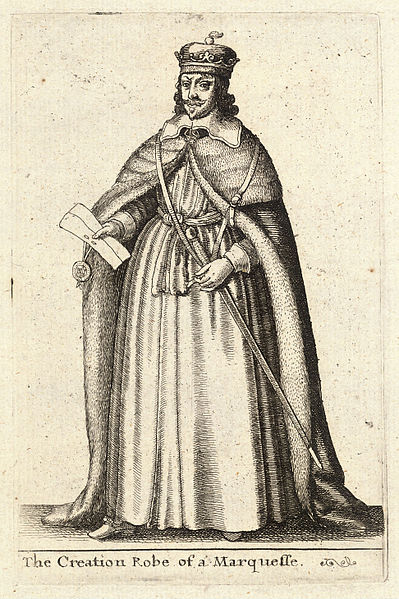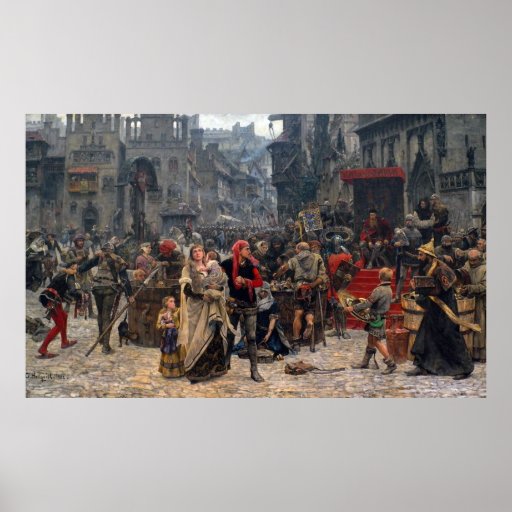Intriguing update.
And if I haven't already said so feel free to use those arms and mess with as needed.
And if I haven't already said so feel free to use those arms and mess with as needed.

good update. I do love geography.
minor nitpick: barony of Murmansk? OTL Murmansk didn't exist until 1916.
Exact translation of "Muurman" from Sami. The city itself doesn't exist yet, but the Barony controls the area called Murmansk.I decided to mostly keep the original names of the area to avoid confusion.

So far, so good. Please keep up the excellent work! I readily await the next update for that which has yet to come.
P.S. I'd like to reccommend Paint.Net to you. I can live with the simple color-border formats of all and any maps you upload, but just gonna suggest it anyways. (No price - the programs free).
Very nice to see and read a new update!
There just isn't an easy solution to the problem of ruling the new province though the Finn Dauphin/Prince of Wales/Hertug af Halland solution is as nice as they come.


Nice to see the TL back and a fine update indeed.
Getting married..!!! Now really - didn't you pay attention to your father telling you to getting engaged every now and then but never marry!
Congratulations.
Nobility and Aristocracy of the Kingdom of Finland (14th Century)
Whilst originally holding mostly Swedes, the Finnish aristocracy has quickly grown to hold people from all walks of life. Native Finns, Russians, Swedes, Danes, Estonians, Sami and even a few Germans hold positions of authority within the Kingdom. Whilst indeed powerful, nobility has never reached the level of authority that it holds in France or the Russian Principalities. Burghers and Clergy too hold much of the power; and we will see more of their influence on the nation in the beginning of the 15th century.
The most powerful families in the Kingdom of Finland are as follows:
- Bååt: Holders of the Duchy of Tavastland, the Bååts trace their lineage from Sune Bååt whom fought beside King Birger I during the kingdoms founding, and have become only more popular with time. Typically skilled stewards; the family has held the position of Chancellor for the Kingdom for three successive generations and have been consolidating their hold slowly; rather than trying to bleed it dry. There currently exists two cadet branches of Bååts (aside from their Ducal title); the Count of Savolax and the Barony of Nyslott.
- Koskinen: As the former Chieftains of the Savonians; the choice for the Dukes of Savonia was obvious. Considered strange even by other Finns, the Savonians (and the Koskinen family by extentions) are rumoured to sleep with bears and hunt the very beasts with their barehands. Though holding the lowest population of the southern duchies, the Savonians have large numbers of skilled hunters whom are eager to join in as levies for a chance of plunder.
- Raahe: Or as they are more commonly known as "Brahe", are a family orginally from Danish Scania which migrated to Finland at the turn of the century. Often seen as pompous and greedy by the other families; their creation of the commune of Korsholm is still looked upon with suspicion. Could they be trying to undermine the monarchy?
- Von Rohr: A devout Swedish family which immigrated into Finland at the beginning of the 14th century; they at first seemed doomed to hold meager holdings in Kittilä, but when the local mines found gold their fortunes changed overnight. Using the gold to regain some status; they are just starting a new construction project of a Cathedral in Rovaniemi to thank God for their good fortunes.
- Rurikovich: A cadet branch of a cadet branch of the main Rurikovich line; the House was established when Konstantin Michaelovich, the son of Michael of Tver immigrated to Finland in the late 13th century. Holding onto vast swathes of territory in Karelia, they are firm supporters of the Orthodox faith and have married extensively with the Princes of Novgorod and Pskov.
- Graan: When people point to the Koskinen family and call them strange, they have a tendency to say,"At least we're not made of Grain" in jest to the House Graan. Considered by far the poorest of the nobles; the family hold the large duchy of Kola. Whilst large in size and possibly resources; they have the lowest population of all the regions in Finland due to consisting almost fully of the local Sami tribes.
Grand Duchy of Åbo and Nyland (Royal Fief)
The single most powerful and populated Duchy of them all. Most of the baronies in the Grand Duchy are under control of the King, or smaller cadet branches consisting of younger siblings and cousins of the family. Of all the fiefs, the Grand Duchy is by far the most populated and rich due to trade with the Hansa and other surrounding nations.
--Barony of Borga
--Barony of Åbo
--Barony of Kuusisto (af Munså)
--Barony of Rochensalm (Kotka)
--Barony of Naantali
--Barony of Laittila
--Barony of Salo
--Barony of Raisio
--Barony of Aura
--Barony of Esbo
--Barony of Nurmijärvi
--Barony of Vihti
--Barony of Hanko
--Barony of Porvoo
--Barony of Loviisa
Duchy of Tavastland (House Bååt)
Under the guiding hand of House Bååt, the once feared Tavastian tribe has become second in prestige only to The King himself. Though the land is not overtly rich and the populace is still quite low, the high number of levies and fortifications in the Duchy make it a keystone in central Finland.
- County of Tavastia
--Barony of Lahtis
--Barony of Birkland
--Barony of Tammerfors
- County of Savolax
--Barony of Nyslott
--Barony of Michel (Mikkeli)
- Teutonic Order (Finnish Order)*
Duchy of Savonia (House Koskinen)
Largely the same as prior to King Birgers arrival; the Savonians have been united under the House Koskinen. Still largely untouched woodland and lakes, the Duchy is still a wild and dangereous place. The only reason the duchy gets any income is the large number of hunters and good quality fur pelts they bring in for trade.
- County of Northern Savolax
-- Barony of Kuopio
-- Barony of of Joensuu
- County of Kainuu
-- Barony of Suomusalmi
-- Barony of Kajaani
-- Barony of Sotkamo
Duchy of Kvenland (House Raahe)
Whilst the Duchy of Kvenland was originally under the control of its local chieftains, in 1320 it was taken over by an immigrant from Denmark called Hans Brahe. Quickly "going native" he struck bargains and some say knives as well; and became the leading nobleman in the Duchy. Whilst the Kvens claim glorious history as kings before the Kingdom of Finland was formed; their only true contribution for now is the "Commune of Korsholm" which regulates trade between Northern Sweden and Finland, growing fat with the tariffs.
- County of Northern Ostrobothnia
-- Barony of Raahe
-- Barony of Reisjärvi
-- Barony of Alavieska
-- Barony of Pyhäjärvi
-- Barony of Pedersöre
- Commune of Korsholm
Duchy of Lappland and Kemi (House von Rohr)
By far the largest of the Duchies, Lappland hosts a large minority of the Sami peoples. At the beginning of its history the duchy was the poorest and with lowest population, but with the discovery of gold in Kittilä it has become richer. The Duchy still has a relatively low populace, but it is slowly becoming richer and more populated.
-County of Kemi
--Barony of Kemijärvi
--Barony of Keminmaa
--Barony of Kolari
--Barony of Tornio
--Barony of Ylitornio
-County of Inari
--Barony of Ivalo
--Barony of Koppelo
--Barony of Törmänen
--Barony of Keväjärvi
--Barony of Utsjoki
-County of Rovaniemi
--Barony of Salla
--Barony of Savukoski
Duchy of Karelia (House Rurikovich)
The Duchy of Karelia has a rich history of standing between the East and the West, and this is readily apparent when one enters Vyborg. Churches of Catholic and Orthodox denominations are both plainly visible and Russian is mixed with traditional Finnish or Swedish quite readily. The Duchy itself whilst de jure since start of the Kingdom was only formalized with the heavy Russian imigration at the end of 13th century. The duchy itself consits of four tribes: The Veps, The Votes ,the Ingrians and the Karelians.
-County of Vyborg
--Barony of Vyborg
--Barony of Kymi
--Barony of Enar (af Enar)
-County of Vodi
-Barony of Vodi
-County of Olonets
--Barony of Onega
--Barony of Sortavala
Duchy of the Kola (House Graan)
Unique in the Kingdom and perhaps even the world; the poor Duchy of Kola is lead by a Sami noble family; The Graan. Having sworn allegience to the Crown during the reign of King Magnus I, the King had granted the family the duchy and right to self-governance.
--Barony of Kantalahti
--Barony of Murmansk
Duchy of Estonia
Fresh off of the boat as it is; the Duchy of Estonias future is not yet decided. Despite being the smallest of the Duchies it has a relatively high population when compared to the others, and with fertile farmlands it could easily become the foodbasket of the Kingdom.
-County of Estland Proper
--Free City of Tallin
--Barony of Järvä
-County of Ösel-Wiek
--Barony of Ösel
--Barony of Wiek
*Not a vassal of the Kingdom.
Below: Map of the Duchies.

---------------------------------------------------------------------
Note: I am bad at making maps.[/QUOTE
"Barony of Brahe"
So that's where the family of Tycho Brahe the astronomer got their money!
Also: I don't mean to nitpick, but you might want to leave the sk off of Murman. Neither Novgorod nor Muscovy rule Murman in this TL and sk is a slavic designation for a place name.
Also: I don't mean to nitpick, but you might want to leave the sk off of Murman. Neither Novgorod nor Muscovy rule Murman in this TL and sk is a slavic designation for a place name.
Having said that, Murman is going to be a very important window on the world for Finlandia in the future. A great place for Finlandia to build a navy.
